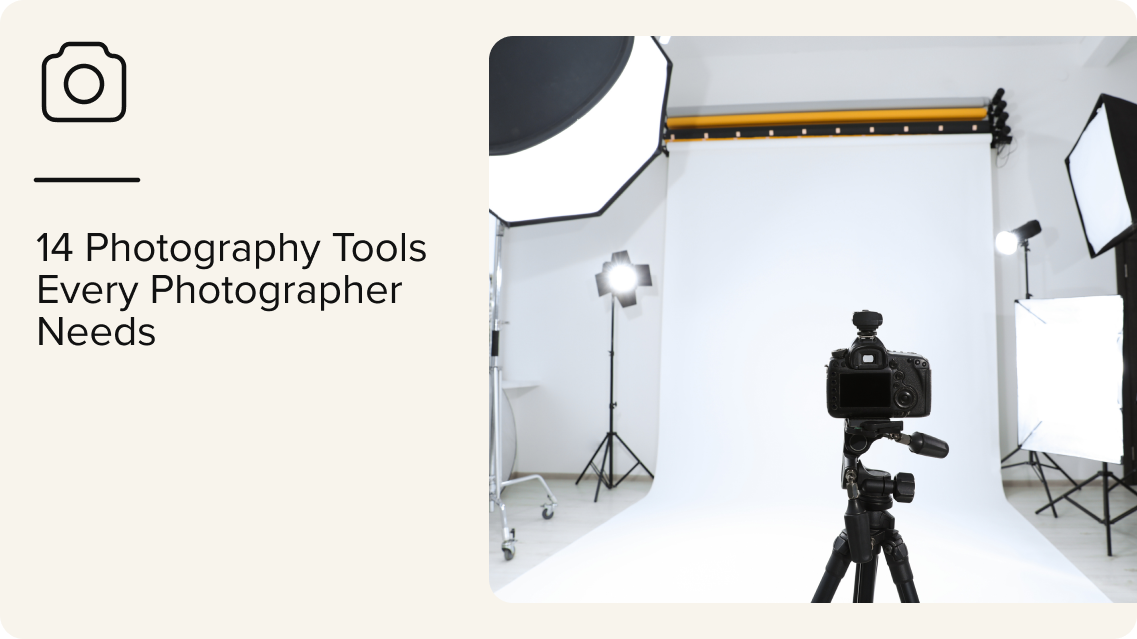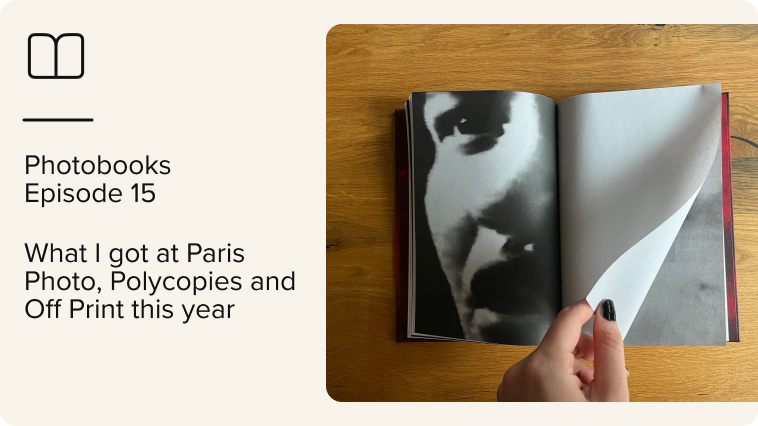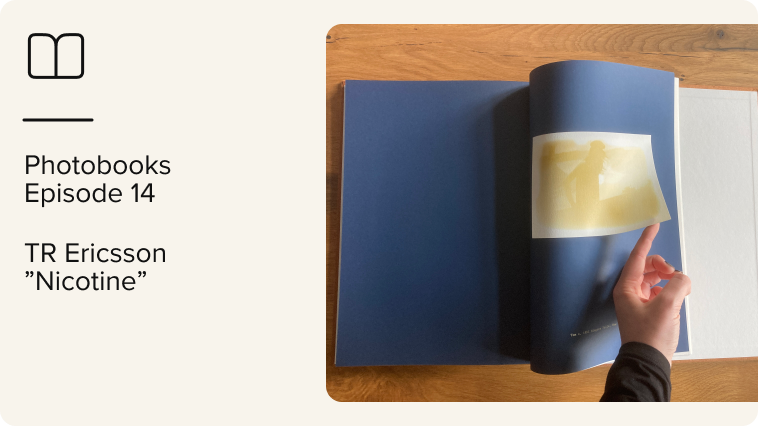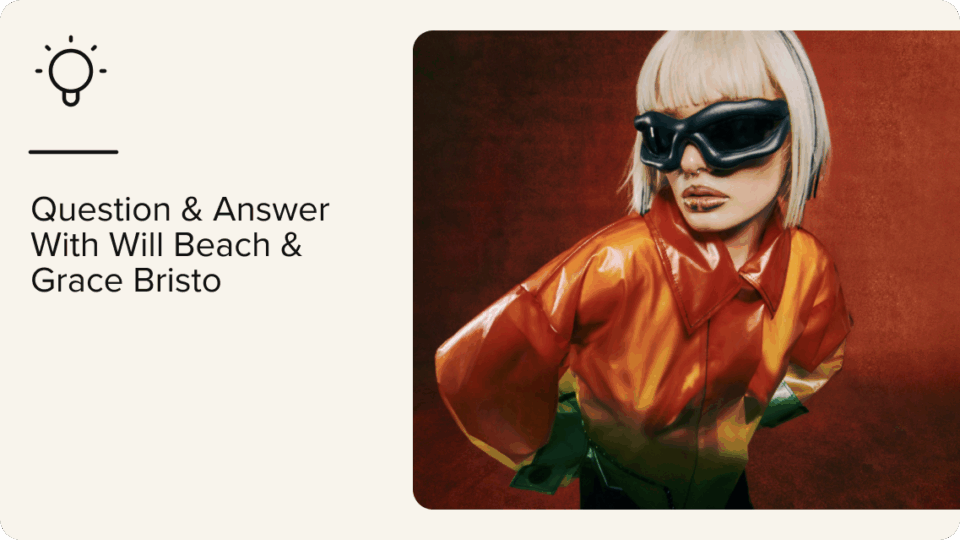Whether you’re a seasoned professional or just starting out, having the right photography tools can transform your workflow. They not only help you capture stunning images but also make it easier to manage, edit, and share your work with clients and teams.
In this blog, we highlight 14 essential photography tools and software—from top online photo galleries for photographers like Picdrop to must-have camera equipment and creative props. We’ll cover what makes it stand out, its key features, and pricing.
TL;DR of Recommended Photography Tools and Apps
- picdrop: a photo sharing and photo proofing tool to showcase work, get client feedback, and simplify project delivery.
- Photo editing software: tools like Adobe Lightroom and Capture One organize, retouch, and enhance your photos.
- Cameras and lenses: DSLRs or mirrorless cameras paired with versatile lenses expand creative possibilities.
- Lighting gear photo equipment: external flashes (Godox or Profoto), reflectors, and diffusers improve exposure and add creative control.
- Photoshoot accessories and props: camera straps, memory cards, camera bags (e.g., Lowepro), backdrops, and props enhance comfort, workflow, and visual storytelling.
- Calibration tools and lens filters: ensure accurate colors and allow creative effects for professional-quality images.
Essential Photography Software for Professional Photographers
1. picdrop's Photo Delivery Solution for Professional Photographers
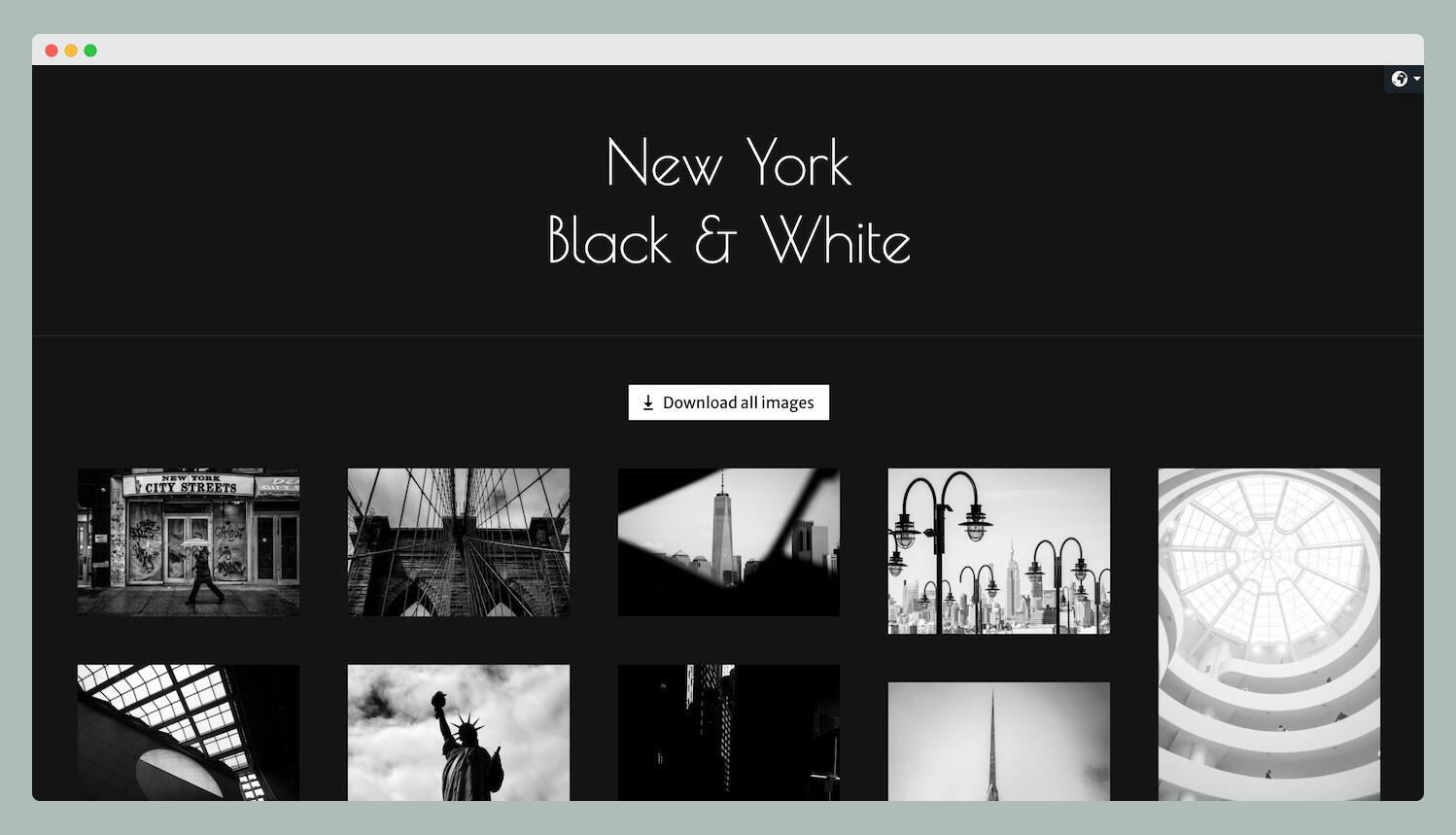
Beyond the gear, professional photographers need a seamless system for communicating with clients, showcasing their work, and delivering the final photos to the clients. This is where picdrop, one of the best online photo galleries for photographers, comes in.
picdrop is one of the best client photo-delivery tools for professional photographers. It offers a user-friendly interface, beautiful gallery templates, and secure file sharing. With picdrop, you can:
- Drag and drop photos to upload to the client’s photo gallery. No file conversion or resizing needed.
- Create stunning online galleries (for photos and videos) with customizable designs.
- Easily deliver photos to clients with password-protected links and download options.
- Control access to your galleries and set expiration dates.
- Forever live photo gallery (as long as you’re still a picdrop user).
And the best thing? picdrop’s photo-sharing apps simplify your photography workflow by keeping everything in one place—from first client preview (with picdrop’s photo proofing solution) to final delivery. No more juggling email attachments or third-party file transfer services. With picdrop, you get:
- Faster feedback loops, so projects move forward without delays.
- A professional, branded client experience that elevates your business.
- Peace of mind knowing your work is secure and always accessible.
- Seamless integration with Adobe Lightroom and CaptureOne.
Whether you’re delivering wedding photos, commercial shoots, or editorial work, picdrop streamlines the entire client communication process so you can focus more on shooting and less on admin.
picdrop pricing starts at $10.99 per month. You can also try out picdrop by signing up to our forever-free plan. Check out the full picdrop pricing and included features.
2. Photo Editing Software: Lightroom, Skylum, or GIMP
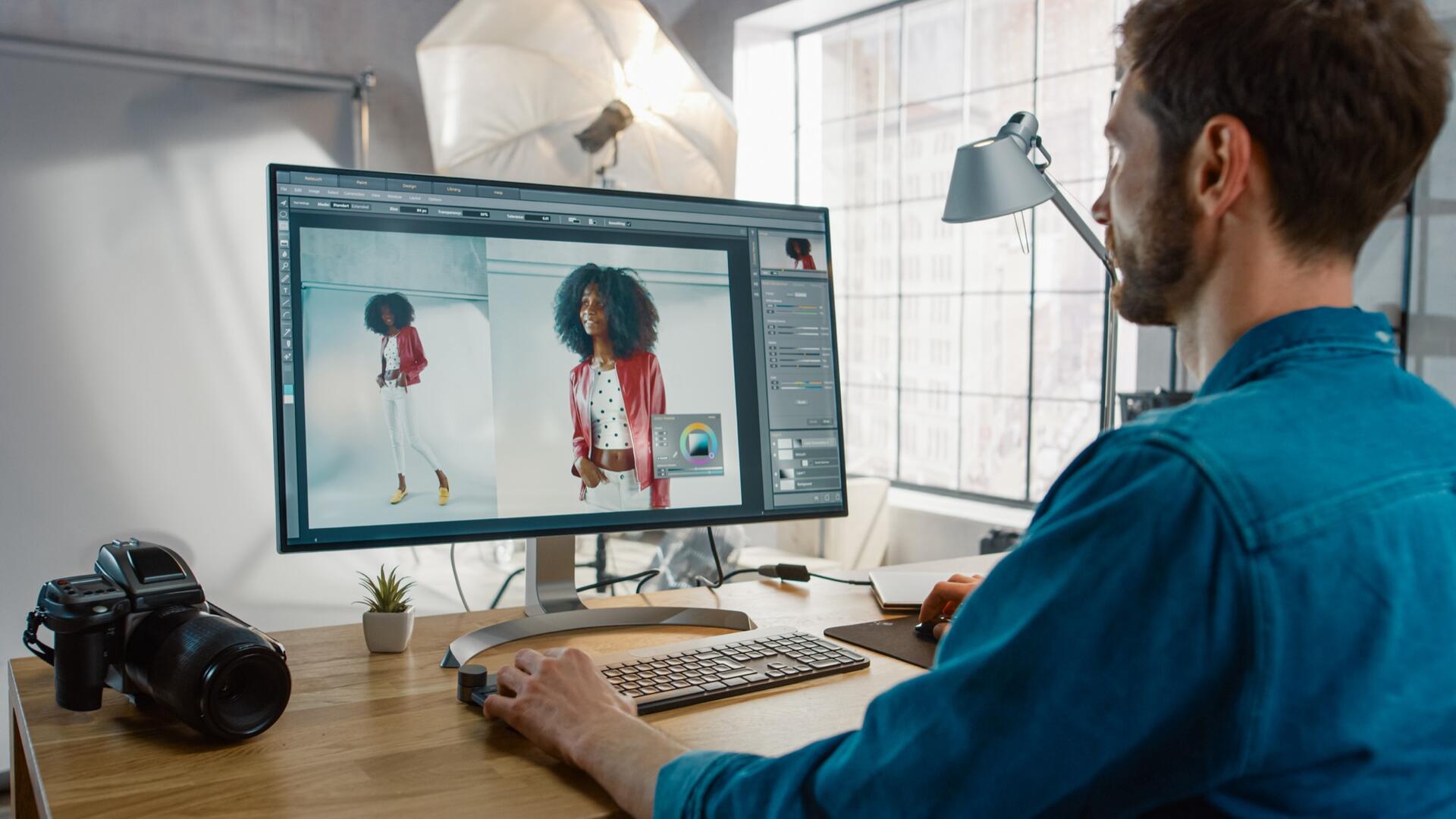
Photo editing software allows you to develop RAW images and edit them to unleash their full potential. It’s a powerful tool for photographers of all skill sets, enabling them to organize images and photoshoots, then enhance colors, adjust exposure, remove blemishes, dust spots, or unwanted elements, and apply creative effects for a cleaner and more professional final image.
Photo editing software comes in various options. Here’s a breakdown of the pricing models:
Subscription-based
Popular options like Capture One or Adobe Lightroom require a monthly or annual subscription, typically costing around $10 per month.
One-time purchase
Software like Skylum also offers a one-time purchase fee that costs around $250.
Freeware
Free editing software like GIMP exists, offering basic editing capabilities but lacking the advanced features of paid options.
Essential Photography Tools and Equipment for Professional Photographers
Now that you know our favorite photo-sharing platforms and photo editing apps, let’s take a look at some of the recommended photography tools to have.
3. Professional Camera: DSLRs and Mirrorless Cameras
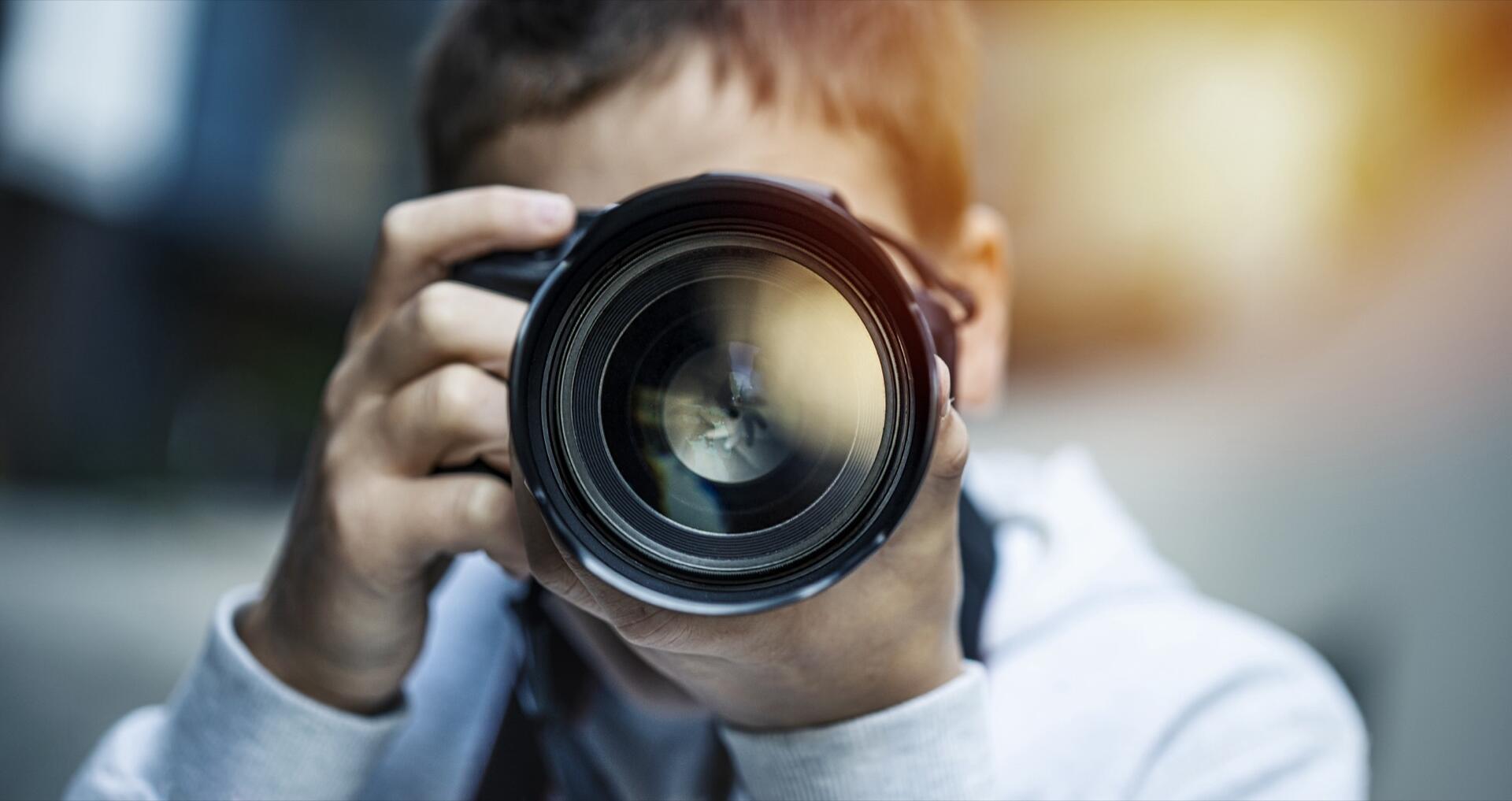
Yes, the cornerstone of any photographer’s toolkit is the camera. Paired with your photography skills and knowledge, the camera is the instrument that translates your vision into a tangible image.
There are two main categories of professional cameras to consider:
DSLRs (Digital Single Lens Reflex)
These offer excellent image quality, interchangeable lenses, and a wide range of manual controls for precise adjustments. They have an optical viewfinder that lets you see the scene exactly as it is.
Mirrorless cameras
Smaller and lighter than DSLRs, mirrorless cameras boast similar image quality and manual controls. They use an electronic viewfinder (EVF) that displays a digital representation of the scene being captured.
The price of a professional camera can vary widely, ranging from $500 to a staggering $8,000 or more. Several factors influence the cost:
Brand
Certain brands’ models, like Canon, Nikon, Sony, and Fujifilm, generally command moderate to high prices due to brand recognition and advanced features. Iconic brands like Hasselblad and Leica offer impressive craftsmanship with a hefty price tag.
Sensor size
Full-frame cameras with larger sensors offer the best low-light performance and image quality but come at a premium. APS-C (or smaller) sensor cameras are a more budget-friendly option while still delivering excellent results.
Features
Cameras with advanced features, such as high megapixel counts, fast autofocus systems, and built-in image stabilization, cost more.
4. Diverse lens set
While camera choice is important, lenses are the tools that shape the image and your vision. A diverse lens set unlocks a world of creative possibilities, allowing you to explore different photographic styles and capture a wider range of subjects. Consider a versatile zoom lens for various situations and a prime lens for low-light photography or shallow depth-of-field effects.
The cost of a lens can vary greatly, typically ranging from less than $100 to a staggering $3,000 or more. Here’s what affects the price:
Focal length
Lenses with longer focal lengths (telephoto) are generally more expensive than wider lenses.
Aperture
Lenses with wider maximum apertures (like f/1.2 or f/1.4) allow more light and create a shallower depth of field, but they are more expensive.
Brand
Brand reputation plays a role, with leading brands often commanding higher prices.
Used or new
For beginners who are just learning about lenses, buying used lenses can reduce the price significantly.
Even with a limited selection of lenses, photographers can still create compelling, creative imagery. If you only have one lens or focal length, embrace the challenge of finding innovative ways to work with it. Play with light, experiment with composition, and focus on your subject matter.
5. Camera strap
A reliable camera strap is an essential photography equipment for every photographer, providing comfort and security during shoots. It ensures your camera is always within reach and helps prevent accidental drops.
A good camera strap typically costs between $20 and $100, depending on the materials and features. When choosing a camera strap, consider the following:
Material
Opt for durable materials like leather, nylon, or neoprene that can withstand regular use.
Weight of gear
Ensure the strap can comfortably support the weight of your camera and lenses without causing strain.
Design
Look for a design that suits your style and provides the best ergonomic support. Consider the quality of the fasteners, as they will secure your camera and prevent it from detaching.
6. External flash units
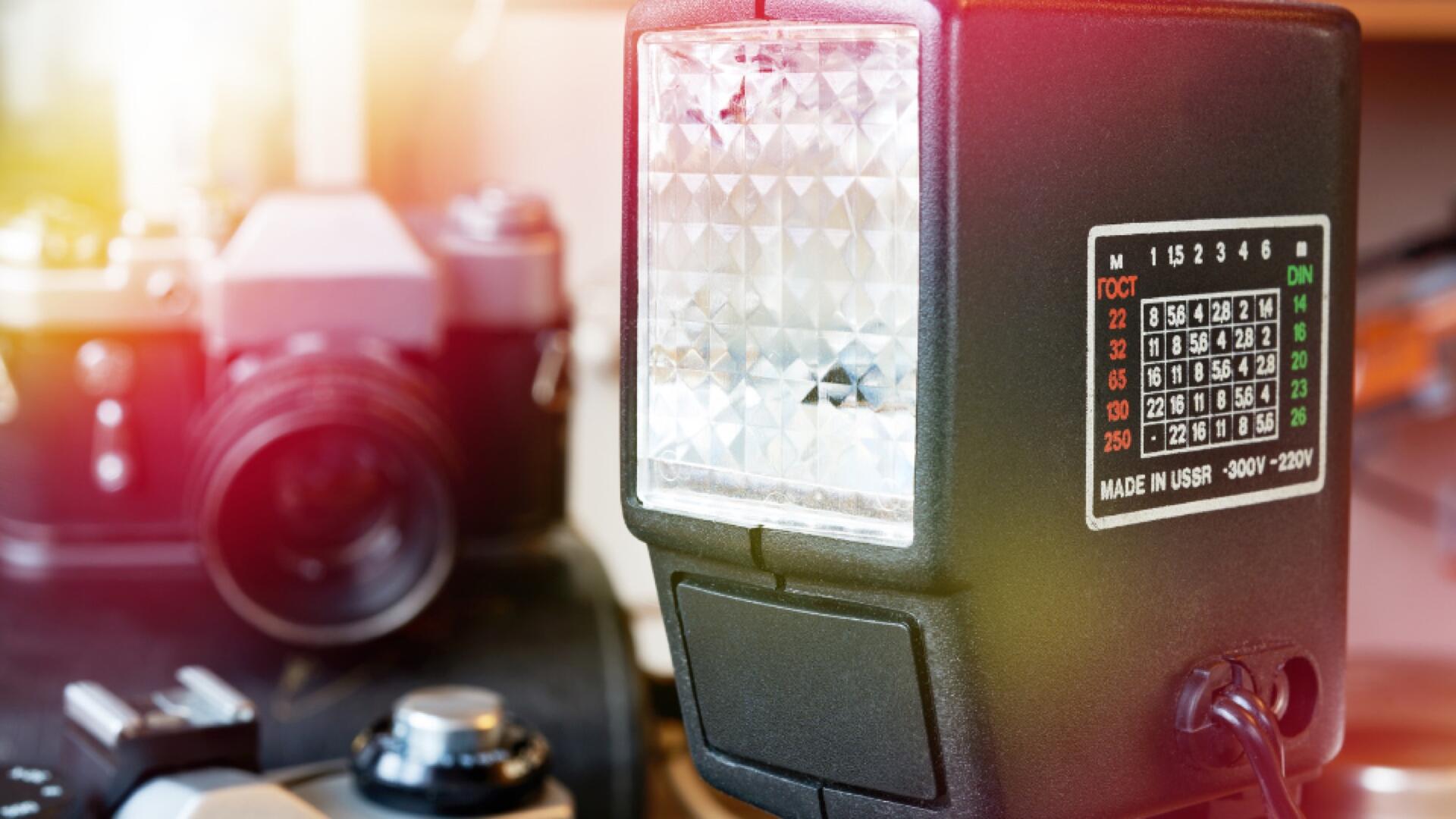
While some cameras have a built-in flash, they often produce harsh, direct light that can flatten your subject and create unflattering shadows. External flashes, like hot shoe flashes, allow you to bounce light off walls or ceilings for softer, diffused lighting. You can also position the flash off-camera to create dramatic lighting effects.
External flash units can range in price from around $100 to $1,000+ depending on several factors:
Power
Flashes with higher guide numbers (a measure of flash power) can illuminate larger areas and are better suited for professional use, naturally costing more.
Features
Flashes with features like high-speed sync (allowing flash use at faster shutter speeds), wireless triggering capabilities, and weather sealing are expensive.
Brand
Reputable brands like Canon, Nikon, Godox, and Profoto generally command higher prices due to brand recognition and build quality.
7. Light Formers Like Reflectors and Diffusers
Reflectors bounce light from a light source (sunlight, flash) to brighten shadows and create a more balanced exposure. They are particularly useful in outdoor portrait photography.
Diffusers, on the other hand, soften harsh light from the sun or a flash unit. They can be used to create flattering, diffused light for portraits or product photography.
Reflectors and diffusers are some of the most affordable tools in a photographer’s arsenal, typically costing between $20 and $100 each. Here’s what affects the price:
Size
Larger reflectors covering a wider area can be more expensive, but will usually result in softer and more even light.
Material
Reflectors can be made of collapsible fabric, collapsible discs, or rigid materials. Fabric and disc reflectors are generally more affordable.
Diffusion strength
Stronger diffusion materials cost slightly more, but of course also diffuse light more.
8. Camera insurance
Investing in camera insurance is smart for photographers to protect against unexpected damage, theft, or loss of their valuable equipment. Camera insurance provides peace of mind, ensuring that you can continue your work without significant financial setbacks.
Camera insurance can vary in cost, but typically ranges from $100 to $500 annually, depending on the coverage and equipment value. When considering camera insurance, take into account the following:
Coverage
Look for comprehensive policies that cover accidental damage, theft, loss, and even liability protection for professional photographers.
Providers
Research reputable insurance providers that specialize in photography equipment to ensure you get tailored coverage.
Pricing
Compare different plans and premiums to find affordable options that offer the best value for the level of coverage provided.
9. Camera bag
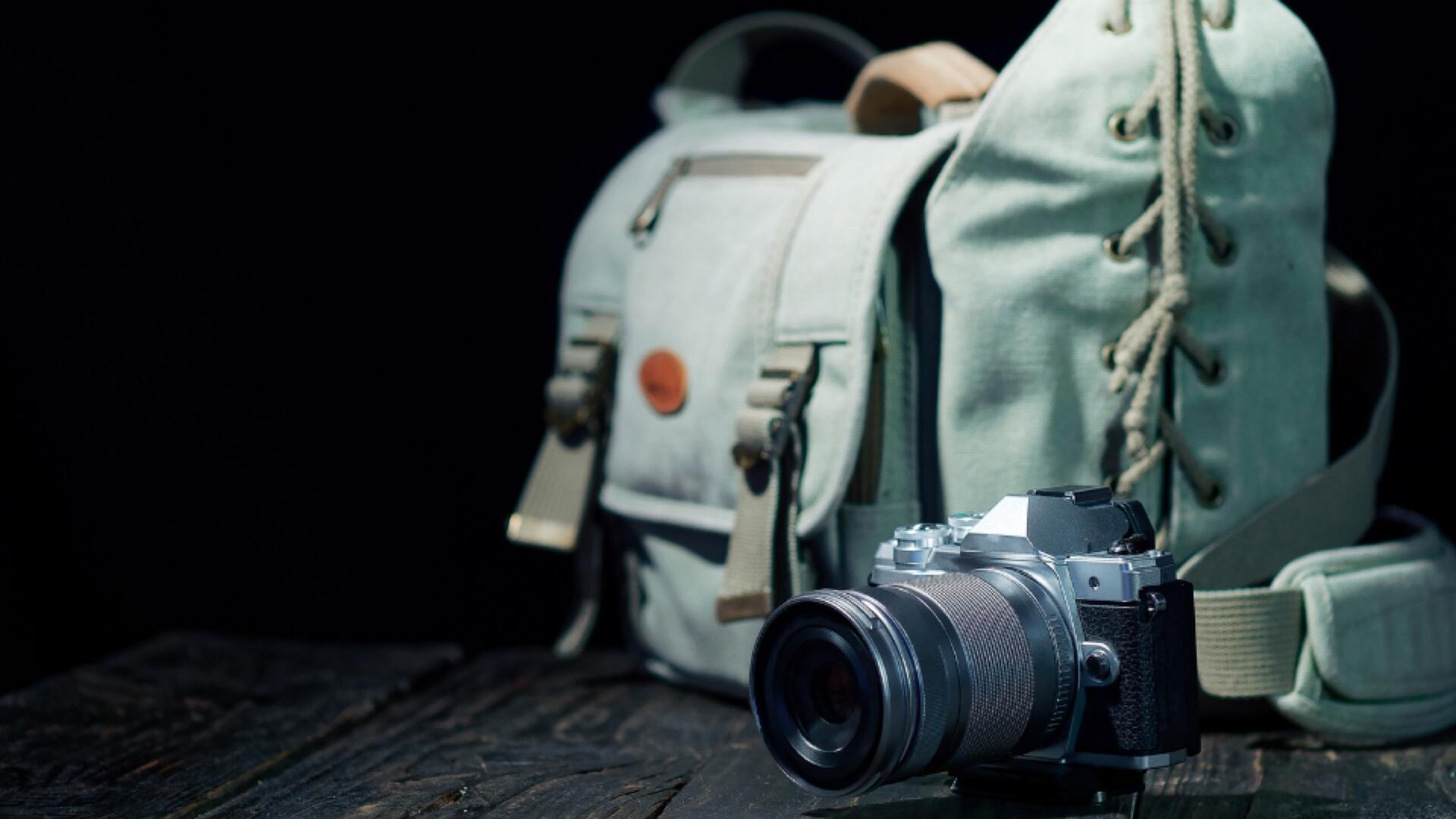
A well-padded camera gear bag safeguards your equipment while even offering weather sealing for protection in harsh conditions. Choose a bag that suits your shooting style and sits comfortably on your body – ergonomics is more important than you realize! Backpacks are ideal for carrying a lot of gear, while sling bags offer a more compact and portable option for everyday use. Factor in additional storage space for snacks and drinks, shoot days can be long.
Camera bag prices typically range from $30 to $300+ depending on several factors:
Size and capacity
Larger bags that accommodate multiple camera bodies, lenses, and accessories will cost more.
Material
Bags made of weather-resistant materials like nylon or canvas are more expensive than basic fabric bags.
Brand
Reputable brands like Lowepro, Wandrd, and Peak Design are known for quality materials and construction often have higher prices.
10. Memory cards
Memory cards are the digital storage units where your captured photos are saved. Choose cards with sufficient capacity to accommodate your shooting needs. High-resolution photos can take up a lot of space, so consider your average file size and shooting duration.
Faster memory cards allow for quicker burst shooting and faster image transfer to your computer. This is crucial for fast-paced action or sports photography.
Memory card prices typically range from $20 to $200+ depending on three main factors:
Storage capacity
Cards with larger capacities (128GB, 256GB or more) naturally cost more than smaller capacity cards (16GB, 32GB).
Speed
Faster cards with higher read/write speeds are more expensive than slower cards.
Reliability
Typically, reliable and established brands are more expensive than the average memory card – but they offer peace of mind.
Be sure to always have spare memory cards on hand and adapt the practice of switching cards during shoots to minimize the risk of losing images due to card failure. It’s better to be safe than sorry!
11. Calibration Tools
Color accuracy is paramount in professional photography. Monitors, cameras, and printers often display colors slightly differently. Calibration tools create a standardized profile, ensuring your photos look the same on your editing screen as they will when printed or displayed on other devices. Editing photos with an uncalibrated monitor can lead to inaccurate color adjustments.
Color checkers are relatively inexpensive tools, typically costing between $20 and $100. The price can vary depending on:
Features
Some checkers offer advanced features like multiple color targets, software integration, ambient light measurement, or software integration, influencing the cost.
Brand
Reputable brands might have a slight price premium compared to lesser-known manufacturers.
12. Lens filters

Lens filters are attachments that screw onto the front of your lens and offer various effects and functionalities. While not essential for every shot, they can be valuable tools for enhancing your images, expanding creative possibilities, and offering an additional layer of protection for your lens.
Here are some popular lens filters:
Mist Filter
This filter creates a soft, dreamy effect by diffusing light, which can add a cinematic quality to portraits and landscape photography.
Circular Polarizing Filter (CPL)
This filter reduces glare and reflections on water, glass, and shiny surfaces, resulting in richer colors and increased saturation.
Neutral Density (ND) Filter
This darkens the scene without affecting color, allowing you to use slower shutter speeds for creative effects like blurring motion or water.
Graduated Neutral Density (GND) Filter
This filter darkens only a portion of the frame, helping to balance exposure in scenes with high contrast (e.g., bright sky, dark foreground).
Lens filter prices vary significantly, ranging from $20 to $300+ depending on several factors:
Filter type
More specialized filters, such as ND filters or variable ND filters, generally cost more than basic CPL filters.
Size
Filters must match the diameter of your lens. Larger filter sizes naturally come at a premium.
Material
High-quality filters made from optical glass with multi-coatings for reduced glare and color casts are more expensive than basic plastic filters.
13. Photography backdrops
Photography backdrops offer a controlled environment for creating professional-looking images in your studio. They come in various styles and materials, allowing you to customize the look and feel of your photos.
You can choose from various backdrops, from seamless paper in classic colors to textured fabric backdrops for a more natural look. You can even use printed backdrops to simulate specific environments. Photography backdrops range from $20 and can go up to several hundred dollars depending on these factors:
Material
Fabric backdrops are versatile and generally affordable (around $20-$100). Vinyl backdrops are more durable and weatherproof but can be more expensive.
Thickness
Thicker backdrops are less likely to wrinkle and can provide better coverage and durability, often resulting in a higher price.
Size
Larger backdrops naturally cost more than smaller ones.
Brand
Reputable brands known for high-quality materials may command a higher price tag.
14. Creative props and accessories
While not essential for every photo, creative props and accessories can elevate your images and add personality or visual interest. They can be used to tell a story, set a mood, or enhance the subject of your photograph. These props and accessories can be:
- Flowers, hats, scarves, furniture pieces, vintage objects
- Lifestyle elements or textures
- Plates, cutlery, tablecloths, and decorative elements
The cost of creative props and accessories can vary. You can find affordable options at thrift stores, dollar stores, or even your own home. Consider DIY projects or borrow items from friends and family.
15. Bonus tip: Good Shoes 😉
Try picdrop for A Seamless Client Photo Delivery Experience
Investing in the right photography apps and tools empowers you to capture stunning images and manage your photography business efficiently.
picdrop offers the best platform for photographers to share photos with clients. Simply drag and drop the photos, tweak the presentation design to match and enhance the viewing experience, and share the link with clients for photo approval. Once you get client feedback, you can directly work to edit the photos without the need to import them back to LR or C1.
Try picdrop today! Sign up here to get started with our free plan.
Try picdrop today!
Don’t miss out on revolutionizing your workflow with picdrop! Unlock a one-month free trial with full access to all features and see the difference it makes to your photography business.
